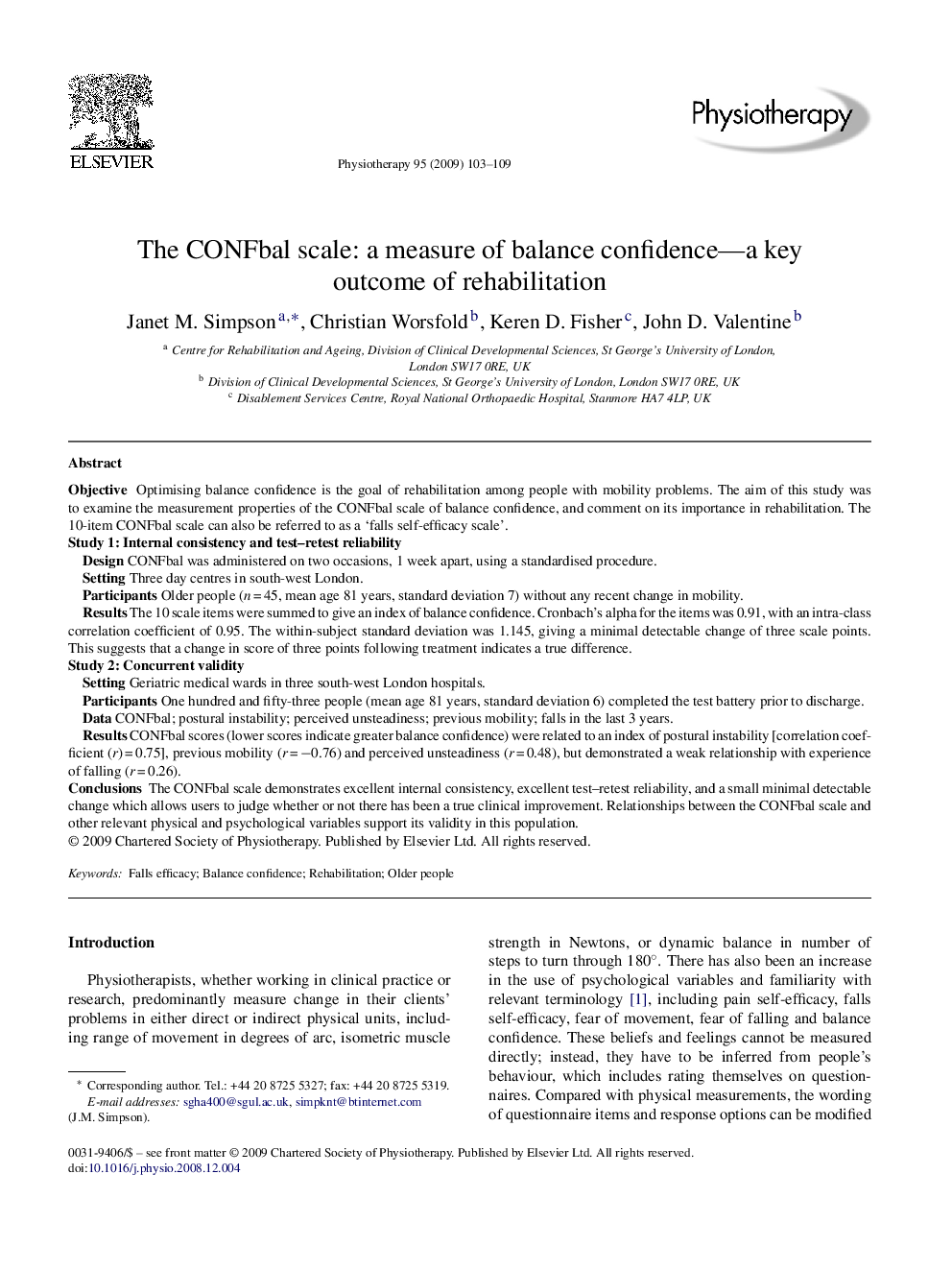| Article ID | Journal | Published Year | Pages | File Type |
|---|---|---|---|---|
| 2627583 | Physiotherapy | 2009 | 7 Pages |
ObjectiveOptimising balance confidence is the goal of rehabilitation among people with mobility problems. The aim of this study was to examine the measurement properties of the CONFbal scale of balance confidence, and comment on its importance in rehabilitation. The 10-item CONFbal scale can also be referred to as a ‘falls self-efficacy scale’.Study 1: Internal consistency and test–retest reliabilityDesign CONFbal was administered on two occasions, 1 week apart, using a standardised procedure.Setting Three day centres in south-west London.Participants Older people (n = 45, mean age 81 years, standard deviation 7) without any recent change in mobility.Results The 10 scale items were summed to give an index of balance confidence. Cronbach's alpha for the items was 0.91, with an intra-class correlation coefficient of 0.95. The within-subject standard deviation was 1.145, giving a minimal detectable change of three scale points. This suggests that a change in score of three points following treatment indicates a true difference.Study 2: Concurrent validitySetting Geriatric medical wards in three south-west London hospitals.Participants One hundred and fifty-three people (mean age 81 years, standard deviation 6) completed the test battery prior to discharge.Data CONFbal; postural instability; perceived unsteadiness; previous mobility; falls in the last 3 years.Results CONFbal scores (lower scores indicate greater balance confidence) were related to an index of postural instability [correlation coefficient (r) = 0.75], previous mobility (r = −0.76) and perceived unsteadiness (r = 0.48), but demonstrated a weak relationship with experience of falling (r = 0.26).ConclusionsThe CONFbal scale demonstrates excellent internal consistency, excellent test–retest reliability, and a small minimal detectable change which allows users to judge whether or not there has been a true clinical improvement. Relationships between the CONFbal scale and other relevant physical and psychological variables support its validity in this population.
